#but as a culture not the greek region
Text
Sup people! I went to a cool museum today! There was way too many children but they left while I was finishing up my first drawing! Then there was a lot of adults that wanted to sit so I was at the museum for around 4 hours today yey!!
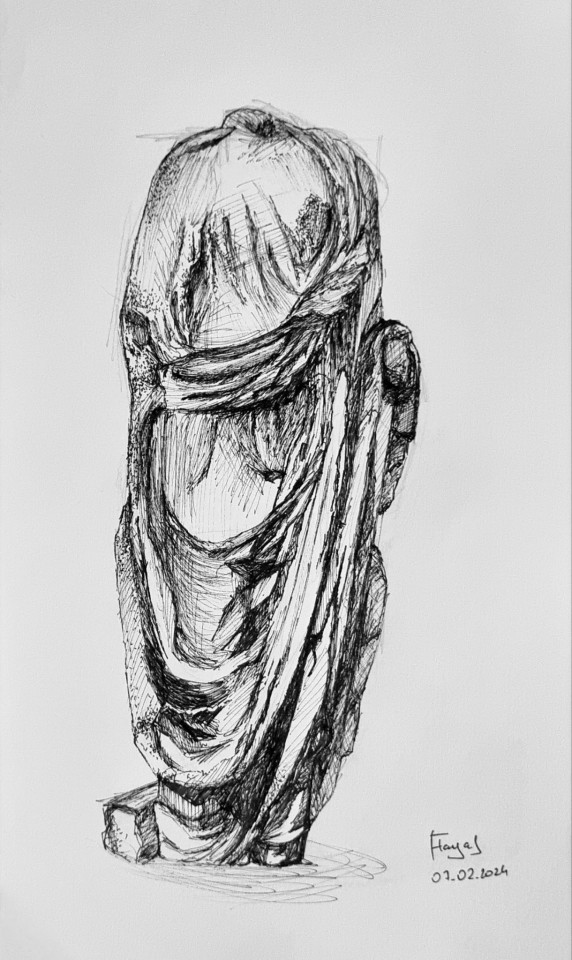
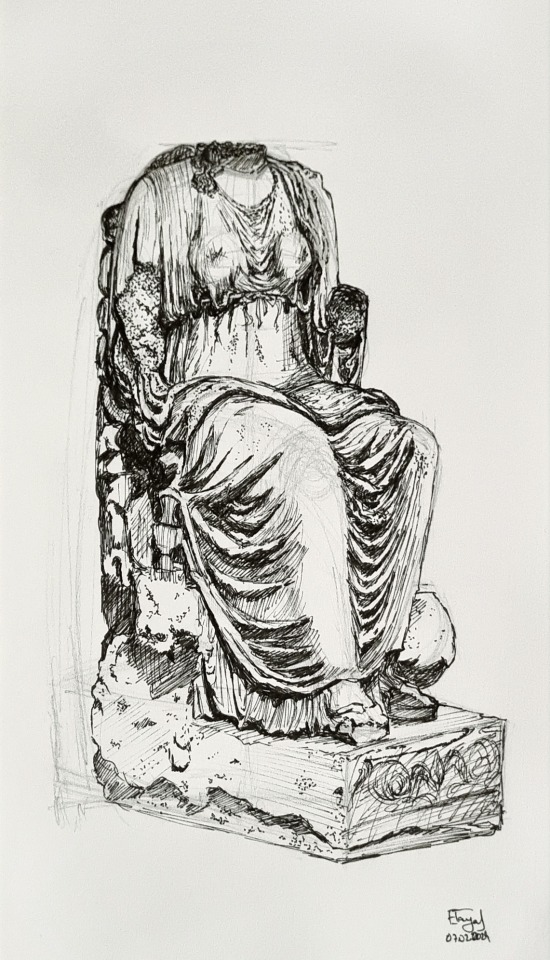
#artists on tumblr#art#atist#drawing#illustration#traditional art#traditional drawing#traditional sketch#traditional illustration#hand drawn#my draws#artist#ink#pen#artline#statue#ancient greek#ancient greece#but as a culture not the greek region#Both of these statutes are from İzmir region I think#ancient#museum#museums#museum art#texture#my day#my day today
13 notes
·
View notes
Text
today days old faun/fauna same etymology (equivalent to pan roman god faunus &/or fauna)
#greek equivalent of fauna is panis no way#learning things when going what is/was particular distinctions b/w fauns & satyrs btw. oh great now the pucks are depicted satyrically#what do you have to do to get No Cultural Crosspollination across centuries in even the relatively limited region of now europeish. smh#including going on into the modern day when my association w/fauns is less abt Nature God Connections than kinda goated w/the sauceness#hence not going Ah Of Course about All Creatures and Nature God Connections in the first place lol#the surprise ''obvious'' connections of english when Appearance of lexical similarity doesn't guarantee any etymological link#just like it doesn't re: pronunciations out here & here's everyone w/the pact to lose their shit if someone says smthing they've only read#hang on now i'm remembering & going what's up with the occasional christianity thee devil satyresque i.e. goat guy imagery huh#doesn't seem to be a clear cut answer; Perchance that [goat guy] pagan association had Evil Guy association pushed uponst it#not much Biblical ''seeing a goat guy: fucked up'' save hand wiggly [scapegoat] / sorting parables sheep are good guys boo goat sinners#but even less Biblical ''there is a thee devil & oh boy you don't wanna get stuck in um eternal torture w/that guy'' so here we are#circling way around let's think about akd the mysteries lucifer. let's think about whether they made out with the mysteries jesus or stuff#but just the Them like ooh that one behind the scenes look at their walking through in costuming thank God (laugh track)#posts brought to you by tangential offshoots of like 3 other posts i didn't make & [still not drawing!] but still learning fun facts
4 notes
·
View notes
Text
So tired of only having drawing motivation while im at work its killing me man 😭😭💀
#thinking about one of my many aus and the costuming for it#ancient greek and byzantine styles#ive been having so much fun trying to incorporate a central style with multiple people from different regions#and letting their cultural motifs come through in that style of dress#but its all a fantasy au so im sure i dont need to go that deep#but i WANT to#royal consort au you have my heart#my posts
0 notes
Text
Updates to AO3 "Mythology" Fandoms
Hi AO3 users! You may have noticed that recently, fandoms previously canonized as "Mythology" are being updated to "Religion & Lore". This renaming project is part of a wider ongoing process on AO3 about respectful treatment and naming of various religions, spiritual beliefs, faiths, and collections of folklores belonging to a particular religious or cultural tradition. This includes both major and minor religions, as well as reconstructionist, ancient, and modern religions.
In the coming months, the term "Mythology" is being phased out of canonical fandom names. This is because of its potential for use as a disparaging term, and the way in which it is used primarily for religions which are already under-represented. Since "mythology" has connotations of being fictional or inferior to the religious beliefs of the speaker or writer, and is unfortunately used in this way by some, the decision has been made to replace this term with something that the Wrangling Committee believes is more inclusive and less derogatory.
After extensive discussion between individuals from varying religious backgrounds and beliefs, including wranglers representing the various fandoms which were being covered, it was felt that "Religion & Lore" was an appropriate and neutral way to describe the bodies of faith, belief, knowledge, and tradition associated with many of these religions which were ancestrally imparted and regional in nature. It is also hoped that this will decrease ambiguous or confused use, allowing people to more accurately describe their works and find works in which they are interested moving forward.
The use of "Ancient" in many of these fandoms' names reflects that these countries still exist but now have different predominant religions or spiritual beliefs. For example, Ancient Greek Religion & Lore (as Greece is now a predominantly Christian country) or Ancient Egyptian Religion (as Egypt is now a predominantly Muslim country). Because "Norse" does not refer to an extant country, region, or culture, it is not necessary to specify that it is historical or ancient in nature.
The names of these fandoms will also have the native language piped, if the English-language demonym is significantly different from the native-language demonym or if there is a culturally specific term based on consultation with individuals who speak these languages as a first language. We hope to give representation to the language of the source culture by doing so.
Each of these changes has been and will continue to be carefully researched and discussed with traditional knowledge keepers and researchers from the cultures represented in the fandoms under discussion.
Many religions face the issue of texts being written long after their events occurred. Unfortunately this is something which is shared across many religious fandoms; AO3 seeks to treat these religious fandoms equally. Care has been taken in researching characters relating to these fandoms, and character tags will be canonized or made a synonym on a case-by-case basis. Fandom tags that are currently synned to the Ancient religious fandoms have been checked as thoroughly as possible to ensure that they are not referring to modern folk tales, and where possible such relatively modern folk tales are canonized as their own fandoms.
(From time to time, ao3org posts announcements of recent or upcoming wrangling changes on behalf of the Tag Wrangling Committee.)
5K notes
·
View notes
Text
In the weeks since Hamas' Oct. 7 attack, Israeli airstrikes on the Gaza Strip have killed more than 15,000 Palestinians, according to Gaza's health ministry, and destroyed thousands of homes in the territory.
And there have also been tremendous losses to the region's ancient and globally significant cultural heritage. The region was a hub for commerce and culture under Egyptian, Greek, Roman and Byzantine rule. It remained influential for centuries thereafter.
A recent survey by the group Heritage for Peace details the damage done so far to more than 100 of these landmarks in Gaza since the start of the present conflict.
The casualties include the Great Omari Mosque, one of the most important and ancient mosques in historical Palestine; the Church of Saint Porphyrius, thought to be the third oldest church in the entire world; a 2,000-year-old Roman cemetery in northern Gaza excavated only last year; and the Rafah Museum, a space in southern Gaza which was dedicated to teaching about the territory's long and multi-layered heritage — until it was hammered by airstrikes early on in the conflict. (...)
"If this heritage be no more in Gaza, it will be a big loss of the identity of the people in Gaza," said Isber Sabrine, president of Heritage for Peace, in an interview with NPR. (...)
"The people in Gaza, they have the right to keep and to save this heritage, to tell the history, the importance of this land," he said.
The 1954 Hague Convention, agreed to by Palestinians and Israelis, is supposed to safeguard landmarks from the ravages of war. But landmarks in Gaza have been destroyed by Israeli strikes in earlier rounds of fighting. Dozens of sites, including the now-obliterated Great Omari Mosque, suffered damage in 2014. A report by UNESCO, the United Nations body that designates and protects World Heritage sites, cites further destruction to cultural and historic sites in Gaza in 2021. (...)
Destruction of historical sites and other cultural sites is part of genocide, it's the destruction of the proof of a people's relationship to the land and a horrible emotional blow at the community. UNESCO must act immediately against Israel's destruction of Palestinian heritage, and every country and international organism must expel Israel and impose sanctions to make the genocide and apartheid end.
#💬#palestine#gaza#israel#free palestine#world heritage#cultural heritage#historical sites#archaeology#cultures
2K notes
·
View notes
Text
So one of my favourite things to listen to in my off time is debunked conspiracy theories, mainly because it mixes several of my interests: politics, history, and being pedantically right about stuff with objective fact to back it up.
Part of me wishes I could draw more inspiration from this particular well, but doing so risks propagating the same brainworms that create conspiracy theorists in the first place. The grand canyon is a lichtenberg figure carved by a colossal space lightning bolt/energy weapon hitting the earth, which consumed the world in a pyroclasm that caused stone structures melt which we can see across ancient cultures Is a FASCINATING bit of worldbuilding by someone being in denial about the concept of erosion. I don't want to use it however because then my story becomes a transmission point for this bad idea, a psychic parasite that might take root in someone's subconscious and warp their worldview to the point of nonsense.
Take one I heard a few years ago: The word planet comes from the greek word planan, which means wanderer. This is the same word used by the original bible to refer to fallen angels. NASA is lying to us, there are no planets, the non-star lights we see moving in the night sky are fallen angels fixed there by god as punishment for their crimes of coming to earth and beggetting the nephilim, the giants that we can see evidence of in X,Y,Z mythologies.
You can see the narrative potential there right? The questhook about the scholar who invents a better sort of telescope and manages to peer deep enough into space to discover that one of the cosmic bodies is actually a being, only to become possessed by the fallen celestial and driven to free it, just like the extinct linage of giant warlords who rampaged across the region millennia ago. It's such a juicy hook because it plays on the same "aha" moments that the conspiracy theory uses to take root: Oh yeah there IS a linguistic connection between the world planet and the greek word for wandering because they were stars that wandered across the sky oh yeah there ARE a lot of ancient cultures that have myths about giants because it's really easy to imagine people that are big, wonder if there are any internet rabitholes that could teach me more about these thigns?
It's the Dan Brown DaVinci Code problem; It can be entertaining to play around with historical conspirasism as the background for a story but part of your audience are going to be in a vulnerable place and slip all the way down to Qanon levels. It's even worth with the Alex Jones types who can't seperate fiction from reality and take their inability to analyze iconography as a sign on NWO "preprogaming". I don't want to use conspiracy theories/bad archaeology as inspiration only for my work to be pinned up on the red-string board as evidence that everything's connected.
248 notes
·
View notes
Text
Lunari Heritage in Zaun
This is gonna be a reach, but from the little we've seen of Vi and Jinx's mom and younger Silco, I'd guess they were both from the same ethnic group.


In a place like Zaun, where the people are left with scraps, any piece of jewelry sticks out. Vi's mom and Silco are both wearing similar pieces of jewelry. Silco's bracelet could likely be fitted as a necklace since it twice wraps over his wrist. Neither are wearing anything of high quality, but the necklace and bracelet in their respective pictures seem decently maintained if not worn. That's when I thought, these are probably heirlooms.

In fact they looked pretty similar too, but in smaller scale of the princess's own pendants. I wouldn't bring this up if it weren't for the fact that Piltovans prioritize elaborate art-deco aesthetics, the more elaborately geometric the better (Councilor Shoola). So you would assume even the simplest jewelry would be a square pendant or a straight line. But no, big plain circles, and then I remembered we saw that before, on the princess Ambessa killed. Big bronze circles.

And when we look at young Vi , you notice that she's wearing jewelry too. A simple necklace with a green (it looks green) gem. And I realized that the princess's necklace was also adorned green gems.

I'm pulling from scraps, but it's interesting that small things these Zaunites have to adorn themselves (though not for long with the time skips) are similar versions if not simpler version's of the princess's.

At first I thought this meant that many of the cast were actually of Ionian descent. But then in the Princess's scene a thought kept coming back to me, "Why is Mel wearing purple?". Mel, a skilled diplomat from a young age, typically wears the main colors of the nations she hosts and is hosted by. White for Piltover, Black for Noxus (Ambessa), and always with her signature accents of gold. So if Mel followed her mother to Ionia ,where green is a culturally significant color, why purple? It's because Mel and Ambessa weren't in Ionia, they were in Targon fighting the Lunari.
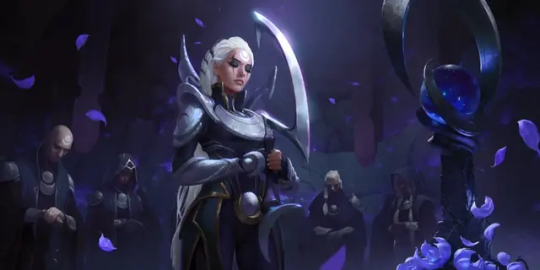

The Lunari are Rakkor tribal people in the Targonian region who worship the moon, and are persecuted for it by the Solari, the religious order that worships the sun. While technically Mt. Targon is influenced by Mt. Olympus and Greek mythology aesthetic, that's more the case for the Solari. Overtime the Lunari aesthetic has been mixed it's originally nomadic culture with East Asian influences. The prominent colors of the Lunari happen to be turquoise, silver, black and purple. It was such a little thing to remember but it made me see connections I hadn't thought about.
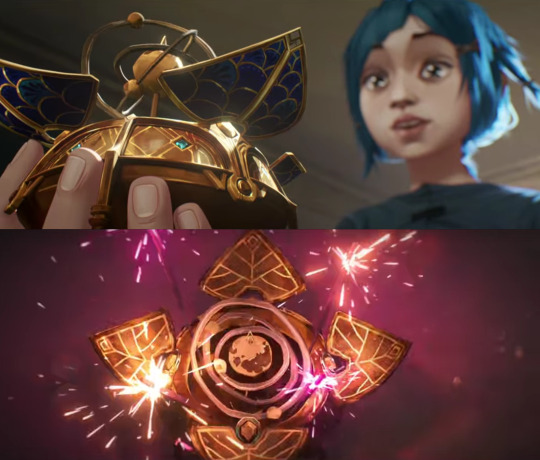
Suddenly everything starts to connect. The bronze coins represent the 3 moons that exist in Arcane's Runeterra. How do we know there are 3 moons, because the Valdiani piece Jinx stole was depicting their planet. In the Valdiani there are 3 orbits circling the Earth, meaning 3 moons (or satelites). Now the engraving on the gold of the princess's necklace makes sense, because it's supposed to resemble the gates at the peak of Mt. Targon. The pendant itself is shaped like the mountain with the gates fitted at the top.


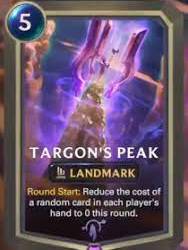
Frankly, it works for the Princess to have been Lunari and waves of descendants of the Lunari to arrive in Piltover and end up in Zaun. In Arcane, Piltover was created as a safe haven to escape the Rune Wars 200 years from the start of the show. Even after the Rune Wars ended the shipping port has likely seen waves of migrant labor and refugees from the ongoing crisis that occur in Runeterra (*cough*Noxus*cough*). It's likely that many of the current generation of Zaunites are of mixed heritage of the various fleeing people's.
It creates a whole new dynamic of the ways in which Piltover's laws, their Ethos, strips the people of Zaun from their identity and reducing them to tools for the mines. Magic is inherently a part of religious ceremonies and religion in general in Runeterra, especially for the Lunari. How do you practice your religion in a place that has banned the means by which it's conducted? There must have been more people like the Lunari who didn't have a problem with their magic, their problem was that they were being persecuted.
The remnants of family keepsakes brought over as communities fled were clung to as best as possible especially as they had to let go of part their spiritual identity. But even that doesn't seem to have lasted either. Vi doesn't keep her necklace, her mother is dead, so lost is her necklace, and we never see Silco wear his bracelet. They could have been stolen, or at best, hidden for safe keeping, maybe Enforcers get suspicious at the hint of mysticism and suddenly they want to talk.
Finally, maybe a little less related, it is interesting how prominent Piltovans and Zaunites take on day and night aspects. The sun shines over Piltover at their best, begins to set at times of uncertainty. While in the cover of night with moon above, the strongest Zaunites strike hardest. One more thing, it is interesting how Arcane's Jinx has taken on darker tones of purple rather than stick with neon pink. I always have to go back and look at a reference to remember that her pants are purple-er than I recall.
Update: I wanted to include that the large doodle Jinx made on her cup actually looks similar to the Lunari's sigil. And the sigil remains on the cup into the timeskip, also the center moon is made smaller within the crescent like in the necklace. I also noticed Jinx's cup later has more violent bomb imagery around it.



#arcane#lunari#zaun#silco#vi arcane#jinx arcane#mel medarda#there's a lot to think about#for everyone including mel#piltover#arcane theory#arcane meta#arcane speculation
708 notes
·
View notes
Text

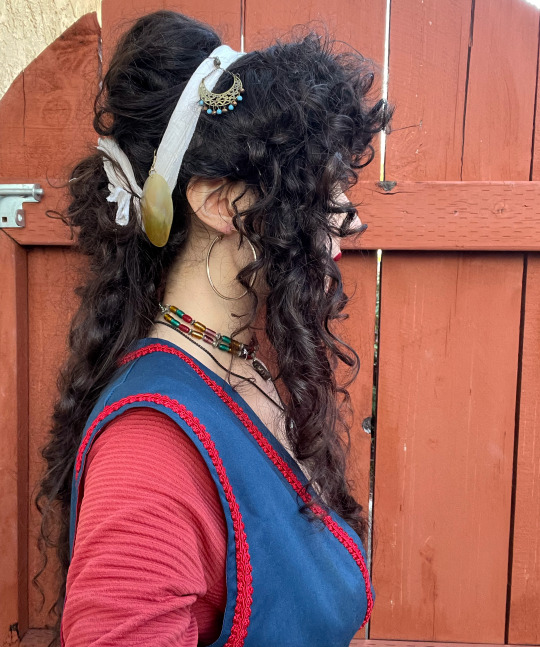


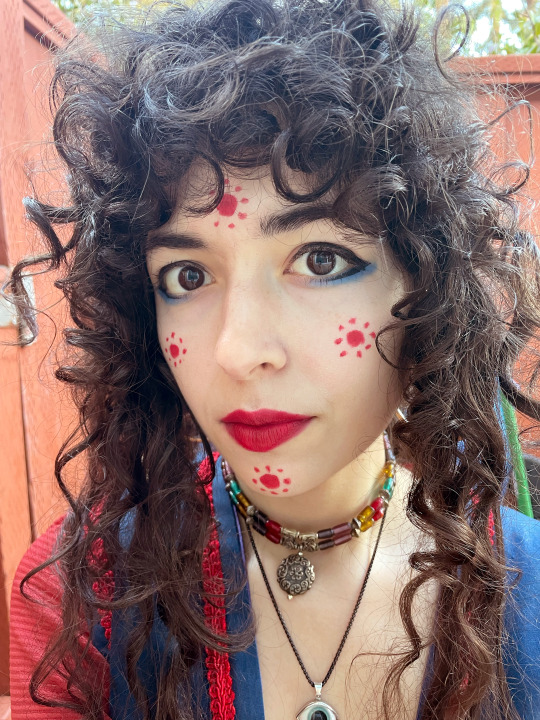

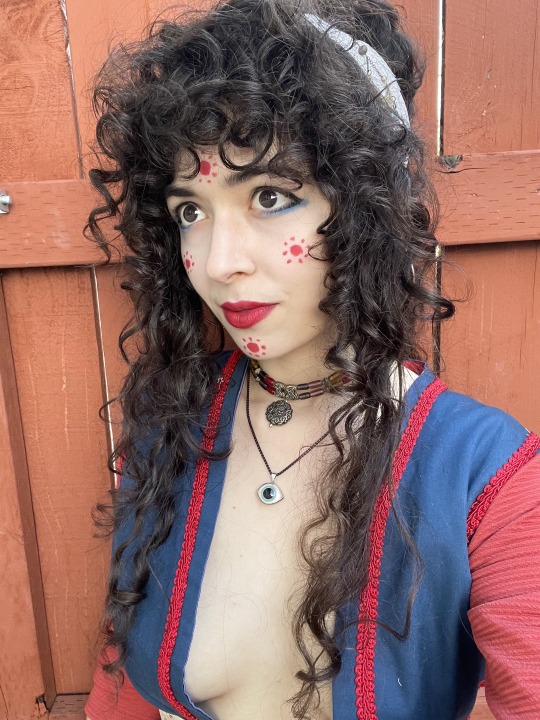
Here are some of the pictures of the Minoan/Mycenaean look I did yesterday! Mind you, it's all very generalized since I haven't made any clothing studies from these time periods yet, so I had just grabbed random clothes and jewelry from my closet that I could at least pass off as the ~vibe~ . I went for a pretty simple interpretation of makeup back then and ended up not really putting a whole lot on my face before the decorative elements, just a very thin amount of white foundation, but even so I figured my skin is pretty pale as it is that if this were historical I probably would have just been fairly bare faced anyway in a similar fashion. I tried to stay pretty close to how makeup might be applied back then and not go too anachronistic, and if I did it was for photographic or artistic purposes (namely, light contouring on my nose not for any sort of like, modern feature minimization, but to make sure my own Greek ethnic features weren't flattened by lighting levels or camera perspective)
Overall this was a really fun exploration of historic culture! Seeing the finished makeup on myself kind of brought over this cultural euphoria for me, even though many things have changed since ancient Mediterranean civilizations, there's almost a feeling of sameness in exploring the history of your heritage and seeing someone who looks or feels like you in ancient art. (But also a brief little disclaimer: the Mediterranean has been an extremely diverse region for thousands of years! I'm just one way of looking and that absolutely isn't representative of all people of Greece, neither then nor now!) I want to explore more historical fashions within this realm, and next time try a more extreme version of the makeup, something that feels more on the ceremonial side than casual like this one.
#wahoo! yippee!!! anywho enjoy and sorry i rambled a lot in the post im not good at being a brief person lol#historical fashion#ancient greece#minoan#mycenaean#greece#greek#history#antiquity#ancient greek#my cosplay
207 notes
·
View notes
Text
In ancient Parthia, we see elements of ancient Mesopotamian culture like this relief of the god Nergal. Nergal, a god of war and death, was worshipped for thousands of years in the region. He’s still showing up in the first couple of centuries CE in Parthia, on this relief from Hatra, a city in northern Iraq that became an important center of trade and culture under the Parthians:

Nergal came, over time, to be associated with Heracles, who had come to the region with the Greek culture brought by Alexander the Great. You can see Parthian depictions of Heracles here:
{Buy me a coffee} {WHF} {Medium} {Looking Through the Past}
218 notes
·
View notes
Text
Conlanging Issues: A Compendium
NOTE: This question was submitted before the Nov 1, 2023 reopening and may not adhere to all rules and guidelines. The ask has been abridged for clarity.
Most of my questions are about linguistics. […] One of the major locations in my story is a massive empire with cultural inspirations ranging from North Africa in the far south to Mongolia/Russia in the far north […] The middle region is where the capital is and is the main root of culture, from which Ive been taking inspiration from Southwest Asia […], but most notably southern regions of India. I've tried to stick to the way cities are named in Sanskrit-based languages but added the names of stars to the front (because the prevalent religion of this region worships the stars [...]). So Ive ended up with names like Pavoprayag, Alyanaga, Alkaiduru, Alcorpura, Cygnapete, etc. Is this a consistent naming system or should I alter it in some way? The empire itself is named the Arcana Empire since [...] each act of my story is named after a tarot card [...].
Another region in my story is based more on parts of South China and North Vietnam, so I've tried to stick to names with a Chinese origin for that. I understand the significance of family names in southwest [sic] Asia, so I wanted to double check [...]. They have only two short given names. Based on the birth order of the child, the first half of the name comes from the fathers family and the second half from the mothers family. It is seen as disrespectful not to use both names because using only one is seen as denouncing that side of your family. Thus I have names like Su Yin, Dai Jun, and Yi Wen for some of the characters from this region, and the city itself that they are from is named Bei Fen.
On the other hand, Im having further trouble naming characters. […] Ive been trying to give my human characters names from real human cultures to distinguish them from the website-generated names of say, orcs, elves, dwarves, etc, but I think I should change many of the names Ive used to be more original and avoid fracturing real world cultures for the sake of my worldbuilding. […] Im still very weak in the linguistics area (even after four years of French, sigh) and am having trouble finding where to read about naming patterns so I can make new ones up. I read your naming guides but am still having trouble on where to start for specific languages. […] Im trying to look into Sanskrit, Turkish, and Persian specifically.
You're Going Too Broad
In my opinion, you’re casting too wide a net. You mentioned looking into Sanskrit, Turkish, and Persian to develop fantasy names. These languages are very different from one another, so unless you’re using them separately for very different parts of your world, it will be hard to draw inspiration from them in a way that makes sense. You’re taking on a huge amount of research in order to worldbuild cultures that span a massive geographical area (basically all of North Africa and Asia?) and have very little in common. Are you sure you want to take on that task?
I could see it being more manageable if most of your story is set in a small region of this world, which you will then research in depth to make sure you’re being as specific as possible.
Taking Persian as an example, you’ll have to decide whether you want to use Old Persian, Middle Persian, or Modern Persian. Each of these comes with a different alphabet and historical influences. They’re also associated with different periods of time and corresponding cultural and social markers. Once you’ve decided exactly when and where you want to start from, you can then expand the borders of your area of focus. For example, if you’ve decided to draw inspiration from Achaemenid Persia, you can then look at the languages that were spoken in the Achaemenid Empire. A quick Google search tells me that while Old Persian was the empire’s official language, they also used Aramaic, Akkadian, Median, Greek, and Elamite (among, I’m sure, many many others and many more regional variations). Further research into each of these will give you ethnic groups and bordering nations that you can draw more inspiration from to expand out your worldbuilding.
Don’t forget to make sure you’re staying within the same time period in order to keep things consistent. It’s a lot of work, and this is only for a small portion of the continent-spanning worldbuilding you’re trying to do.
You can get away with painting the rest of the continent in broad strokes without too much depth if the story doesn’t go there and you don’t have any main characters from those parts of the world. Otherwise, you’ll need to put this same level of detail into your worldbuilding for the area with Turkish-inspired names, and again for the area with Sanskrit-inspired names, and so on.
I know this isn’t what you were asking, but I honestly have a hard time helping you figure out where to start because your ask is so broad I don’t quite know where I would start myself. So, this is my advice: focus down on one region and time period and go from there. Feel free to write back once you’ve picked a narrower focus that we could help you with.
- Niki
So there’s logistical issues in regards to your naming system for southern China-coded regions. One issue is history: mainly on how there is not simply one language in China but multiple due to having a lot of ethnic groups and the size of China. South China in particular has different dialects and languages than the North as seen in this map of Chinese languages and dialects. There’s also how historically Mandarin was not the official language until 1913 in China and historical China saw vast changes in territory dependent on the dynasty. Before then, Mandarin was primarily a northern Chinese language based in Beijing while southern China had its own languages, dialects, and dynamics. Not to mention, historical China saw an evolution of language just like English has Old English, Middle English, Early Modern English, and Modern English. For instance, Vietnam was once part of China during the Tang Dynasty and at another point, it was not part of China.
-Mod Sci
If You’re Borrowing Whole Words or Elements, Research More
The other issue is inconsistency with the cultures you’re deriving this conlang from. In regards to “two given names,” the Chinese name I was given was one syllable and then I would have a last name that was also one syllable. There’s also how not every family is perfect. Not every marriage is sanctioned and some children may come from single parents. Some families may not cooperate with marriage and sometimes children may be abandoned with unknown parents. There does not seem to be contingencies for these names under this conlang system.
The main problem with conlangs is that one needs to truly understand the languages one is drawing from. Tolkein managed to create conlangs due to training in linguistics. Mandarin is already a difficult language with multiple tones, and trying to use it for conlangs without knowledge of how Mandarin works or a good foundation in linguistics is just a Sisyphean endeavor.
-Mod Sci
Four years of French wouldn’t have taught you about linguistics as a science or anything about the language families you’ve listed - Indo-Iranian, Sino-Tibetan, and Turkic, nor any Asian naming conventions. I agree with Niki that you need to narrow down your research.
Pur/pura means city in Sanskrit (ex: Gurdaspur, Hoshiarpur). Prayag is a place where pilgrimages are done. Naga isn’t a place name in Sanskrit (google says it means snake), nagar is and it means town. X Nagar is a very common name for places (Ex: Rajinder Nagar). Many cities in Karnataka have names ending in uru (Bengaluru, Mysuru, Mangaluru, Tumakuru, etc) but the language of Karnataka is Kannada - a Dravidian language and completely different family from Sanskrit (Indo-Aryan). I’m not sure where “pete” came from. “Bad” and “vaal” are common suffixes for places too (Ex: Faisalabad, Allahabad). A disclaimer that I do not speak Sanskrit, I speak Punjabi, which is a descendant of Sanskrit and in the same linguistic family (Indo-Aryan languages).
- SK
Also, This Is Not…Really Conlanging.
Hi OP. Linguistics refers to the science of studying how languages work, not the discipline of learning languages. And nothing shows that gap more than how you have thus far approached constructing fictional languages and toponyms.
The reason why Sci and SK have a lot to say about your place names is because they don't resonate—you have borrowed whole words into your toponyms (place names) from a variety of languages—without an accurate understanding of what these words mean, how they’re pronounced, where they’re derived from—and expected them to work together. I suggest you read the links below on why conlanging is not as simple as choosing some languages and mashing their IRL words together:
Why Using Random Languages Wholesale in your Fantasy is a Bad Idea
Pitfalls of Mashing Countries and Languages in Coding
In your city names, for example, you’re using star names from multiple languages that use different sets of sounds represented by different sets of historical spelling rules. “Cygn-” and “Arcana” stick out like a sore thumb—the fact that one “c” is /s/ and one is /k/ is an obvious flag that they are Latin-derived English borrowings. This is because spelling rules were created in Middle English to make sense of the mix of “c” pronunciations across words of Indo-European origin due to a historical split called the Centum-Satem division. This is a phenomenon that is very specific to our world history, and to the history of English at that. Ironically, in your attempt to avoid stock fantasy names (which also often fall into the Latin-derived English pit), you are taking the exact same approach to naming.
Like Niki said, your selections are far too broad to code under a single umbrella. Do you expect that whatever language that city name came from runs the full gamut of sound inventory & spelling variety that spans multiple continents and hundreds of languages? Because that’s not how languages work. (And yes, I mean hundreds. Indigenous languages and linguistic diversity are a thing. See Niki’s note about just the languages in Persia. And nation-states bulldozing over those languages and pretending it’s just one language is a thing. See Sci’s note about China.) I haven't even talked about the variation in morphology (how words are formed) or syntax (sentence structure).
Please just read or re-read my guide on “naming conlangs” in this post and start from there.
~ Rina
PSA ON CONLANGING AND FANTASY NAMES:
For fantasy language asks submitted after Nov 1, 2023, the asker must indicate that they have read Mod Rina’s conlanging posts linked in FAQ 2 (Guides and Posts by Topic) of the Masterpost under the question “How do I make a fictional language for my story?” While this is an older ask, we are posting it as an example to our followers.
Per our new rules, any questions that can be directly answered in or extrapolated from the FAQs, or questions that indicate that the relevant resources haven’t been read, will be deleted with a note in the Deletion Log explaining why.
As always, if this post was helpful or educational to you, please consider tipping the relevant mods: SK, Niki, Sci, and Rina.
Edited for terminology errors
320 notes
·
View notes
Text

~ Gold Oak Wreath with a Bee and Two Cicadas.
Culture: Greek
Period: Hellenistic
Date: 350-300 BC.
Place of origin: Turkey, Marmara Region: Çanakkale (province), Dardanelles
Medium: Gold
#ancient#ancient art#history#museum#archeology#ancient history#archaeology#greek#Hellenistic#gold oak wreath#gold#wreath#bee#cicada#turkey#dardanelles#350 b.c.#300 b.c.
918 notes
·
View notes
Text
Gaza, that ancient city on the eastern shores of the Mediterranean, has come to be the political and moral compass of the entire world. Despite the pervasive destruction, Gaza stands not as a place in need of lessons. Instead, it is itself the poignant lesson of our modern age – a litmus test for humanity. As the death toll continues to rise, it becomes increasingly challenging to conceive of a violence more profound than that inflicted by machine guns and aerial bombardment. However, Israeli colonial violence – both in Gaza and Palestine more broadly – has historically manifested at various scales. It extends from the confines of a bedroom to encompass a neighbourhood, a whole city, and stretches to the scale of a regional geography.
Understanding the destruction of Gaza calls for a dual perspective. It requires zooming in on the intimate scales of violence while also being aware of these broader manifestations. At the core of Israeli colonialism in Palestine is the logic of partition, a paradigm fundamentally at odds with the land, its people and its history. Gaza has long been a nexus of interconnected worlds: for millennia, it served as a vital crossroads, connecting Palestine to Egypt and bridging the continents of Asia and Africa. The roads from Gaza to Bir al‑Sabe’, Jaffa and Jerusalem have witnessed the passage of visitors, merchants and pilgrims from diverse corners of the world. The city’s social, cultural and economic prosperity has been woven into its geographical openness, a defining feature in Palestine’s long history. Any thought about Gaza and Palestine’s future is bound to reckon with this history.
The enduring imprints of Gaza’s geographical openness are discernible in both its social and built fabrics. This ancient city has witnessed the rule of various empires and civilisations, including the Egyptian Pharaohs, Greeks, Romans, Byzantines and successive Islamic dynasties – each contributing to the rich tapestry of the city. Gaza is home to historic treasures such as the Anthedon Harbour, the port that linked the city to the Mediterranean world in the Roman era; the Great Omari Mosque, one of the most significant mosques in Palestine; and the Church of Saint Porphyrius, believed to be the third oldest church in the world.
These historic landmarks, among residential buildings, universities, museums and cultural institutions, have not escaped the intentional targeting and destruction inflicted by Israel. In essence, these sites embody all that Gaza stands for and Zionism doesn’t – geographical openness and historical continuity. In historical terms, the 75 years of Zionist domination in Palestine represent an anomaly, as Gaza and other cities have perennially thrived on cultural diversity and interconnection.
113 notes
·
View notes
Text
I think with the current situation it's important to understand why Iranians are so proud of their country and culture, and take so much strength from their Iranian identity, but loath the Islamic Republic.
The territory we call Iran today is one of the cradles of civilization. Especially the Kurdish region (sadly, it has been difficult to explore that part for many years, because with the rise in modern archeology also came the greed for resources found in that region that resulted in endless wars).
In the region encompassing Iran today people developed agriculture, built cities of unprecedented size, invented the earliest scripts - thousands of years BC.
The earliest written laws come from that part of the world, as does the first piece of literature we know the author of (a priestess btw). Zoroastrianism is the first monotheistic religion we know of - and still has followers today in Iran - inspiring both Judaism as well as the much later Christian faith.
The Gilgamesh epic was written there probably 2000 years before the Illiad, already incorporating many tropes we later find in world literature from the Bible to Arthurian tales.
When European tribes dwelled in muddy holes, Rome was but a village and Greek cities constantly quarreled with each other, the Persian empire ruled most of the then known world. This was only possible because of modern means of communication and liberal ideas of government and religious freedom (NEVER mention the movie 300 to an Iranian!) Their excellent highway system made trade between the Far East and Europe possible.
The sassanids later stood up to the Roman expansion.
The arrival of Islam lead to another cultural flourish, be it the literature of Hafiz and Rumi, or medicine, maths, art, architecture...
All this is very present for Iranian people. They are proud of their history and culture, that is part but not whole Islamic. Their tradition of celebrating Nowruz, for example, is thought to stem at least from ancient Persian times.
That's why Iranians feel so offended when people from countries with but a fraction of their history think of them as illiterate camelherders or fanatic islamic terrorists and assume cultural superiority over Iran. It also explains a certain resilience. This country has seen so much, 40 years of mullah rule are but a blink in the scope of Iranian history.
2K notes
·
View notes
Text
PSA: Laios vs Laois
One of the most common mistakes I see in the Dungeon Meshi fandom is misspelling or making a typo of the main character's name.
His name is Laios, not Laois. It is pronounced LAY-əs. Here's a screenshot of Laios' page in the World Guide where Kui wrote his name in Latin letters.
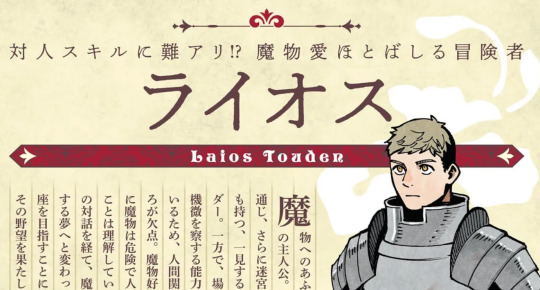
Laios comes from the Greek name Λάϊος, alternative spelling is Laius, but both are equally valid transliterations from the original Greek, which can also be transliterated as Láïos.
I won't go into it now, but in my upcoming essay about the cultural and linguistic references in Dungeon Meshi, there's a lot to say about Laios' name and why Kui chose it. It's not made up! It's not fake! It's a real name and it suits him and the story of Dungeon Meshi perfectly.
Laois is something too, but it has nothing to do with Laios (info dump under the cut if anyone's curious.)
Laois County is in Ireland. It is part of the Eastern and Midland Region and in the province of Leinster. The county name derives from Loígis.
The name Loígis stems from the name of the tribe's first chieftain, Laigse(a)ch, Laeighsech, or Loígsech.
A twelfth or thirteenth century gloss on the tribe's name says that Loígsech comes from lóeg secha. The word lóeg, literally 'calf or fawn', has the figurative meaning of 'favorite or darling', while secha means 'more than; above or beyond'.
As you can see, this doesn't really reflect Laios' character in any way, except maybe comparing him to a calf or a fawn? Though those really aren't animals Kui associates with Laios, as she normally associates him with wolves or lions.
Stay tuned to my tumblr for more linguistic and cultural facts!
#dungeon meshi#delicious in dungeon#laios touden#laios thorden#laois touden#laois dungeon meshi#laois#laios#my stuff#PSA#Dungeon Meshi Research
136 notes
·
View notes
Text
Okay something I wish people understood more is that folk religion and folklore is never static. It varies by region by year by storyteller. There is no Single True Canon in an oral folk tradition. Ancient Greek Religion for example was not one set thing, there is no one set version of “Greek Mythology” or Hellenic folk traditions that is correct. There are different cults that were worshipped in different regions and whose traditions changed over time, some of which had membership that was often mostly a political thing (i.e. most prominent political figures in Greece and Rome for several centuries were inducted into the Eleusinian mystery cult which worshipped Demeter and Kore) or just based in which cities worshipped which patron gods. Hesiod’s Theogeny, the Homeric Hymns, the Apollodorus, all of which are written records of tales from “Greek Mythology,” contradict each other in various ways. Most Greek and Roman plays and epics were written more in response to contemporary political situations than any adherence to a specific legend.
There is no single set canon to other folk traditions either. The body of Arthurian canon is also contradictory and was written by a variety of people across several cultures often shaped by individual political lenses.
This is Also true of the modern US equivalent of written folk tales: superhero comics canon. Written by dozens and hundreds of different people across decades responding to different sociopolitical circumstances and publishing priorities, inherently contradictory basically the whole way through.
#tagamemnon#folk traditions#dc comics#arthuriana#also marvel but I try not to care about marvel products any more#caitie speaks#ancient greek religion#hellenism#Caitie talks classics
183 notes
·
View notes
Text
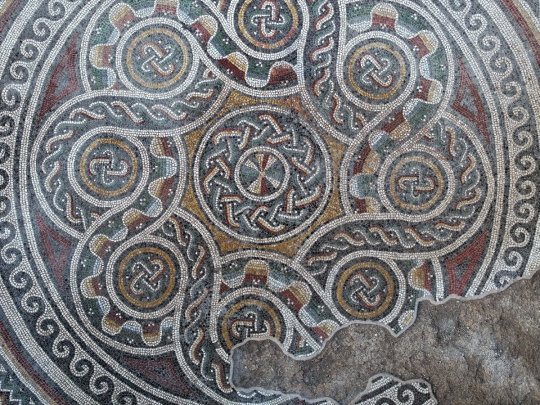
The Largest Ancient Floor Mosaic in Turkey Uncovered
The structure with the largest floor mosaic in Cappadocia and Central Anatolia Region was unearthed during the excavations carried out in Örenşehir District of İncesu district of Kayseri province, located in the center of Türkiye.
During ongoing excavations, new mosaics were unearthed from the villa, which is estimated to have been built in the 4th century.
The excavations are carried out under the direction of Nevşehir Hacı Bektaş Veli University, Department of Art History, Lecturer Dr Can Erpek.
Kayseri Provincial Director of Culture and Tourism, Şükrü Dursun, stated that the excavation began three years ago and that “the structure is expanding every year.” The initial assessment of the mosaic area, which was 300 square meters, has now reached up to 600 square meters.”

Stating that the excavations carried out with the support of Kayseri Metropolitan Municipality continued in an area of approximately 4 thousand square meters, Dursun continued his words as follows:
“In our assessments, we have come to the conclusion that this place was built in the 4th century. According to the findings, there are also traces dating back to the 3rd century and beyond. The quality craftsmanship used in the floor mosaics suggests that this place was used as a very important villa in its era.”
“In the area identified as the reception hall, a Latin inscription was found. In addition to that, Greek inscriptions were also uncovered. Geometrically decorated mosaics are predominantly present here. We have reached the end of our excavations for this year. Hopefully, our work will continue next year.”

The excavation director, Can Erpek stated that the structure continued to be used during the Byzantine period and after the Turks came to Anatolia.
He said, “This place has approximately 33 rooms, spread over a very large area, and is a high-level residence. We have not yet fully reached the boundaries of this residence. It has highly valuable floor mosaics. In the Central Anatolia Region, which includes the Cappadocia region, we do not see such a large residence with floor mosaics. In Cappadocia, during the Roman and Byzantine periods, we generally know about imperial properties. Here, we have encountered the name ‘Hyacinthos’ in the inscriptions. We consider this name to belong to an administrator. When the data becomes clearer, we can more confidently say that it was the residence of an important figure serving in imperial property.”

Stating that Kayseri resembles an open-air museum, Metropolitan Mayor Memduh Büyükkılıç stated that they supported 6 archaeological excavations in different parts of the city.
Büyükkılıç said, “The mosaics unearthed during the excavations here once again emphasized that Kayseri is the cradle of civilization in Anatolia,”.
By Oguz Kayra.
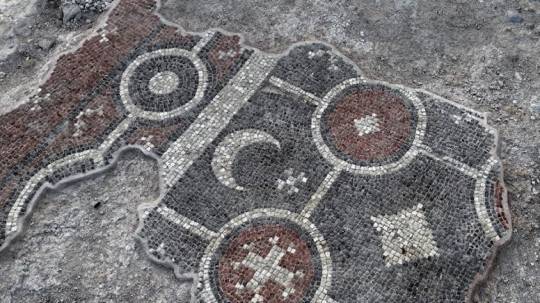


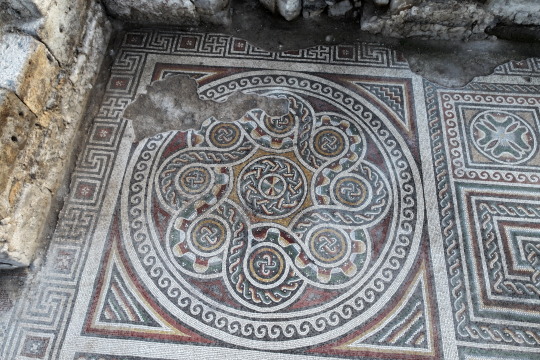

#The Largest Ancient Floor Mosaic in Turkey Uncovered#Cappadocia#Central Anatolia Region#mosaic#art#artist#art work#art world#art news#ancient artifacts#archeology#archeolgst#history#history news#ancient history#ancient culture#ancient civilizations#roman history#roman empire#roman art
195 notes
·
View notes